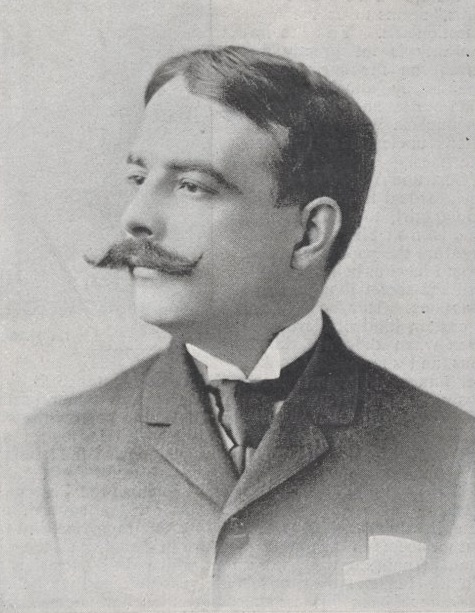

Queer Places:
Yale University (Ivy League), 38 Hillhouse Ave, New Haven, CT 06520
Columbia University (Ivy League), 116th St and Broadway, New York, NY 10027
Sleepy Hollow Cemetery, 540 N Broadway, Sleepy Hollow, NY 10591, USA
 Edgar
Evertson Saltus (October 8, 1855 – July 31, 1921) was an American writer known
for his highly refined prose style. He was a good friend of
Oscar Wilde. His works paralleled those by European
decadent authors such as
Joris-Karl Huysmans,
Gabriele D'Annunzio and
Oscar Wilde.
Edgar
Evertson Saltus (October 8, 1855 – July 31, 1921) was an American writer known
for his highly refined prose style. He was a good friend of
Oscar Wilde. His works paralleled those by European
decadent authors such as
Joris-Karl Huysmans,
Gabriele D'Annunzio and
Oscar Wilde.
Edgar Saltus was born in New York City on October 8, 1855 to Francis Henry Saltus and his second wife, Eliza Evertson,[1] both of Dutch descent.[2] After two semesters at Yale University, Saltus entered Columbia Law School in 1878,[3] graduating with a law degree in 1880.[4] He wrote two books of philosophy: The Philosophy of Disenchantment (1885) focused on pessimism and in particular the philosophy of Schopenhauer and Eduard Von Hartmann,[5] while The Anatomy of Negation (1886) tried "to convey a tableau of anti-theism from Kapila to Leconte de Lisle".[6] After a conversion experience, the once American Ambassador to Pessimism and Anti-theism credited the idealistic and unconventional Ralph Waldo Emerson with having opened his eyes. In an 1896 Collier’s column he wrote, “I began to see, and what to me was even more marvelous, I began to think.” In time, he became a member of the Theosophical Society, an organization that studied, synthesized and experimented with the more esoteric concepts and practices of world religions.
His elder half-brother Francis Saltus Saltus was a minor poet. Both brothers are buried in Sleepy Hollow Cemetery in Sleepy Hollow, New York.
Acclaimed by fellow writers in his day, Saltus fell into obscurity after his death. His novel The Paliser Case was adapted to film in 1920, and his novel Daughters of the Rich was filmed in 1923.
A biography by Marie Saltus, Edgar Saltus: The Man was published in 1925. Edgar Saltus, a critical study by Claire Sprague, appeared in 1970.
Saltus had a three-year love affair in the 1890s with heiress Aimee Crocker, confirmed in her memoir And I'd Do It Again (1936).
The writer and photographer Carl Van Vechten was instrumental in convincing Saltus's daughter, Elsie Saltus Munds, to donate to Yale what is now known as the Edgar Saltus Papers, consisting of thirty-eight first editions, two of them inscribed, and eighteen letters written in 1918. [7]
My published books: